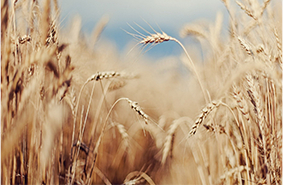Western Australia wheat programs drop to a new low

WA farmers are poised to plant their smallest percentage of wheat in history, subbing paddocks with break crops and chemical fallow.
Wheat plantings are pegged to trend downwards this year, making up 54 per cent of the State’s farmers’ programs, down about 100,000ha on last year.
It will be the second time in a row wheat has made up the smallest-ever percentage of WA grain crops, after 55 per cent of the area was planted to wheat last year, totalling 4.7 million hectares.
Even with less planted, wheat still remains the most widely grown crop in WA, at 4.5 million hectares, followed by barley, canola, lupins, oats and pulses.
Grain Industry Association of WA’s first crop report for the 2019-20 season has foreshadowed barley, lupin and pulse plantings to rise, canola to fall, and oat plantings to remain steady year-on-year.
The report predicts a total 8.27 million hectares of WA will be put to crop this year, down 100, 000ha on last year.
GIWA crop report author Michael Lamond said the pegged decrease in wheat plantings was expected to be most noticeable in low-rainfall areas.
“Last year was the smallest percentage of wheat ever, and what we are seeing this year is the low rainfall areas backing off on wheat plantings,” he said.
“It’s a little early yet but if anything, as the season becomes later they are more likely to drop wheat out to fallow.
“It hasn’t happened yet, the only thing that has happened yet is that growers in the Lakes people are dropping canola.”
WA produced its biggest wheat crop last harvest, at 10.15 million tonnes.
It was only the fourth time in history the State had produced 10 million tonnes of wheat, three of which were in the past seven years.
The GIWA report pegged barley plantings to swell to 1.7 million, up from 1.4 million last year, despite growers bracing themselves for hefty tariffs which could arise from China’s anti-dumping investigation against the Australian industry, largely due to a boost in plantings in the Albany Port Zone.
Canola plantings, originally pegged to increase by up to 15 per cent, are pegged fall to 1.23 million, down on the 1.41 million hectares planted last year, on the back of low subsoil moisture levels.
Lupin plantings are predicted to increase slightly this year, with traditional lupin-growing regions increasing, and the crop expanding into less traditional areas in WA.
Pulse crops are pegged to increase from about 34,000 tonnes last year to 40,000 tonnes this year.
Oats are predicted to remain the same as last year, accounting for 3.9 per cent of total plantings, or 320,000ha.
Read also
The 21st International Conference BLACK SEA GRAIN.KYIV took place in Kyiv on April...
Malaysia kept export duty on crude palm oil at 8% in May
European Parliament supported the extension of duty-free trade for Ukraine
Argentina invests in new grain port
EU deforestation regulations will affect Ukrainian soybean supply chains
Write to us
Our manager will contact you soon












